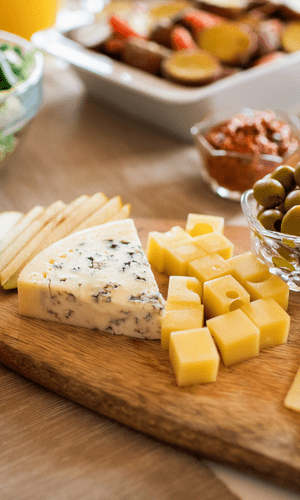Even with the optimism that accompanies the new year, the reality is that times are still tough for most consumers. Their money just doesn’t go as far as it used to, particularly when filling their carts to feed their families. Things that used to be staples are becoming luxuries, and food developers and manufacturers have taken notice seeking ways to use flavors for cost-reduction, especially in the plant-based market.
In fact, in our report powered by Innova Market Insights, we ranked Cost & Nutrition as one of our top four plant-based trends in 2023.
However, as companies struggle to cut costs and maintain margins, one thing that can’t be sacrificed is taste.
“Taste is king, there is no way of getting around that.” said Anne Marie Butler, Global Director, Innovation and Commercial Development. “Whether [you] are working with Edlong or not, thinking about flavor is the key to a successful product.”
For plant-based developers and manufacturers, understanding how to use flavor for cost reduction could give them the edge in this uncertain economy.

Cost-Reduction Through Flavors:
Consider the Consumer
Regarding how to approach cost-reduction through flavor, Julie Drainville, Edlong Sensory Manager, says, “It’s all about understanding your consumer, and what’s important to them.”
For example, “Is the texture of your pound cake super important? Well then you are going to need to make sure you have enough fat. But, if it is that butter note, sometimes you can even improve it with flavor.”
Nailing down what your consumer desires from your products can clarify where cost reduction can happen and where it can’t.
In practice, Butler breaks this down into two primary considerations, “You need to think about the functionality along with the flavor, and what ingredients you really need and why you need them.”

For example, If you’re a developer whose target customers are looking for plant-based cheeses with higher protein, you might think, ‘I’ve heard good things about pea and rice proteins, so let’s go with them.’ But Butler stresses that instead of completing a whole demo like this and then adding flavor, first ask, ‘Does it have to be pea and rice?’
“I would ask, ‘If you’re making a cheese product, what do you want it to do? Does it need to melt or shred? What kind of fat do you plan to use?’” says Butler, explaining how the answers to each of these questions can impact the protein choice and, in turn, every other ingredient, especially flavor.
“If you think about flavor differently it gives you an opportunity to optimize your formulation from the start,” she emphasizes.
Butler believes incorporating or considering flavor as part of early formulations, instead of the finishing touches, makes all the difference.
It’s Never too Early to Start Thinking About Flavor
“If you come to us and have a finished product, there is probably very little room to add something new. But if you come to us earlier on it gives us the chance to collaborate and offer a much better solution. Ultimately, in the hope of reducing cost,” says Butler.
When developers view flavor as the last piece of the puzzle, they often can end up using proteins, fats, sweeteners, and other ingredients at levels that are much higher than necessary driving up cost. Additionally, according to Drainville, every ingredient that is added or increased can introduce even more issues, such as new off-notes, undesired textures, and, of course, higher costs and longer development timelines.
These issues, in turn, are usually combatted by adding higher and higher levels of flavor, but Butler asks, “If you don’t need it, for example high fat, why wouldn’t you want to reduce it and get more bang for your buck from your flavor ingredients?”
Less Ingredients
For Butler, this early collaboration can unlock the potential for your product and your savings.
By leveraging Edlong’s expertise and knowledge of flavor/ingredient interactions, you can optimize your formulations and products to utilize only what’s needed to make them taste great.
What’s more, Butler explains, this could even decrease the amount of flavor needed altogether.
“We might say, ‘This is how far you can push, and if you use this protein it might give you a better impact on meltability and taste. So instead of us having to use 2% flavor, I am going to recommend 0.8%, and it will work with this protein instead of needing to cover it.’”

More options – Cheaper Alternatives
Not only can flavor reduce your need for certain ingredients, but as Drainville says, learning how flavor can work with and honor them also opens up the possibility of using cheaper alternatives.
“If you’re working with a pea protein, for example, understanding what your flavor is going to make up for and how much masking it can do [changes things].” She says you have to ask yourself, “Do I absolutely need the cleanest pea protein or could I use a different one that maybe has a few more off notes, but is more cost-effective?”
She explains how tasting your product without the flavor could make you want to opt for the cleaner, more expensive protein, but knowing how flavor can bridge that gap allows for a much wider range of budget-friendly options.
If you want to learn more about cost-reduction, keep an eye out for our trend video that will be released in late February and our webinar on the topic in March.
Looking to reduce costs on a current project? Contact our global team of experts today to get started.
Topics: Commodity reductionDairy-freePlant-Based
Resource Type: Article